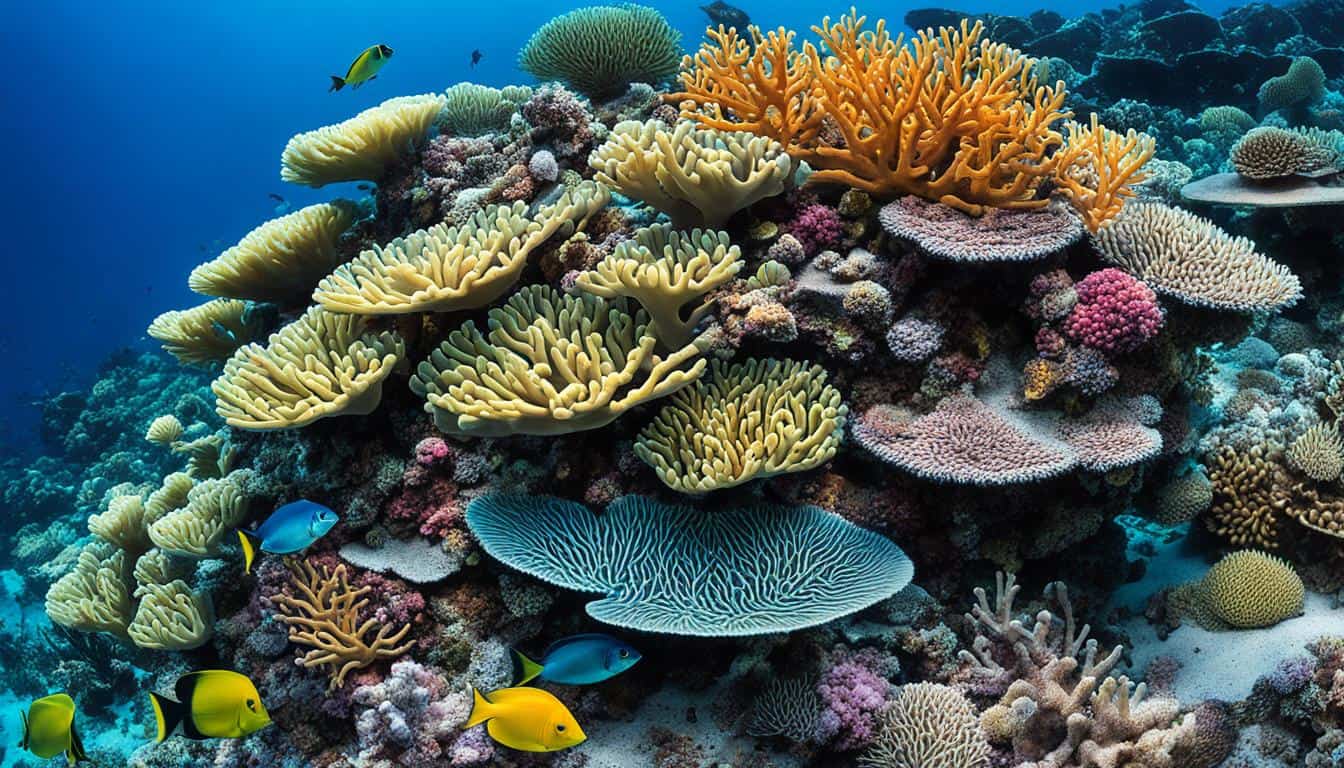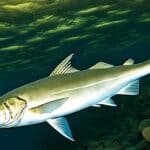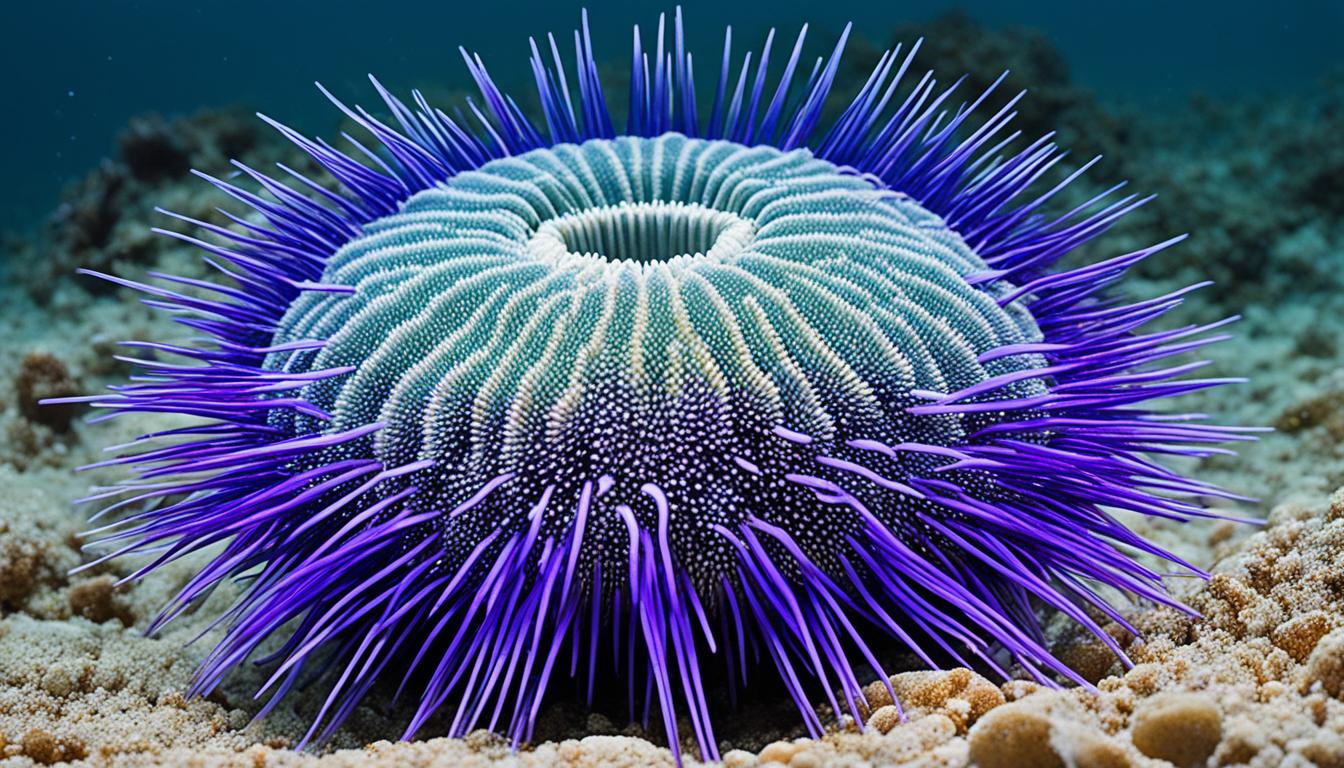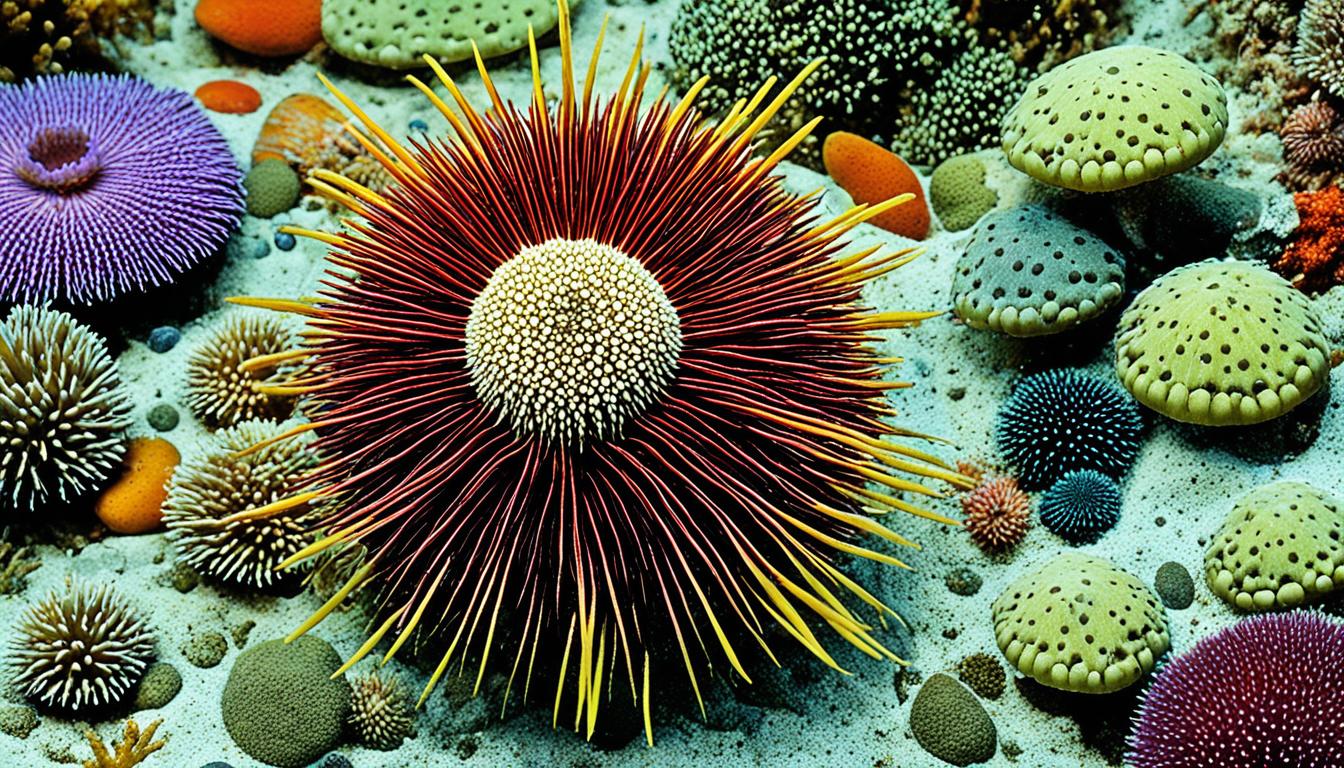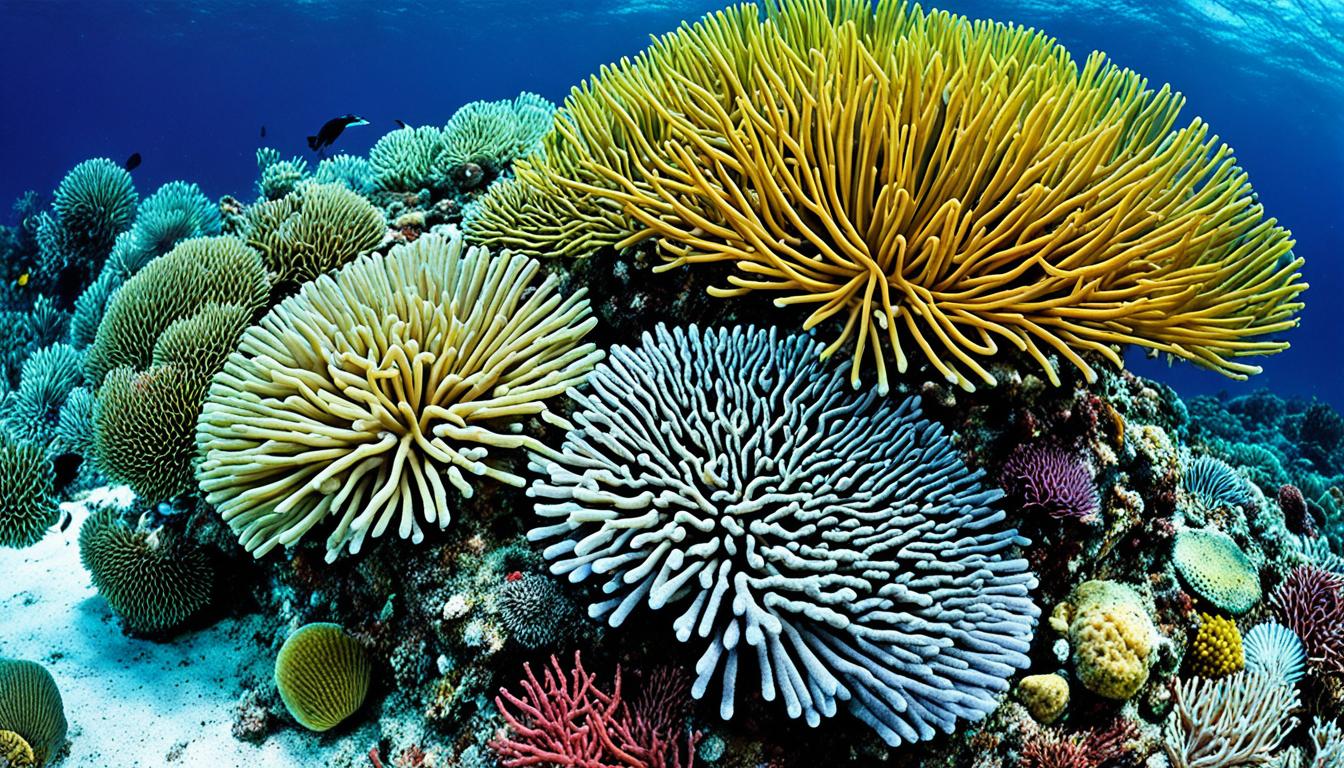Coral reefs are amazing ecosystems full of life and strength. But, they face big threats from the environment. You might ask, how do corals adjust to their surroundings? It’s key to know about coral adaptation as threats like overfishing, bad water quality, and climate change hit hard. Corals use special ways to stay alive, showing how adaptable they are. By learning how corals survive in different places, we can better understand their strength and help protect them.
Understanding Coral Adaptation
Corals face many challenges in their environment. They adapt through various ways, including genetic variation. This variation helps them survive in changing conditions.
The Importance of Genetic Variation for Corals
Genetic variation is key to coral reefs’ resilience. Diverse populations show a range of traits that help them adapt. Traits like tolerance to temperature changes and disease resistance are common.
This diversity helps corals survive climate stress better. It improves their chances of making it through tough times.
Natural Selection: A Mechanism for Coral Evolution
Natural selection drives coral evolution. It picks out traits that help corals survive and reproduce. These traits get passed down, making corals better adapted over time.
This process helps corals evolve to fit their changing environments. By choosing diverse traits, natural selection boosts corals’ ability to adapt.
Examples of Successful Coral Adaptations
Some corals have developed amazing adaptations. For example, some can handle higher temperatures, reducing bleaching risks. Others can get rid of harmful algae without harming themselves.
These adaptations show how important genetic variation and natural selection are. They help corals survive and thrive.
| Adaptation Type | Trait | Benefit |
|---|---|---|
| Temperature Tolerance | Higher heat resistance | Reduces bleaching risk |
| Algal Control | Ability to expel harmful algae | Maintains overall health |
| Resilience | Increased genetic diversity | Enhances survival rates |
How do corals adapt to their environment?
Corals show amazing skills in adapting to their surroundings, especially with temperature changes. This part looks into how corals handle temperature shifts and use algae to survive.
Temperature Thresholds and Resilience
Knowing what temperatures corals can handle is key to understanding their temperature resilience. Each coral type has its own limit for bleaching, showing how adaptable they are. Those living in warmer waters often handle heat better, giving them a higher chance to survive in changing temperatures.
This ability to adapt is crucial for corals to live and for the health of coral reefs.
Adaptation Through Algal Symbiosis
The bond between corals and their algae is key to their coral environment adaptation. With algal symbiosis, corals get the nutrients they need to grow and stay healthy. In hot temperatures, having heat-tolerant algae helps corals deal with stress, letting them adjust to warmer waters.
This partnership shows how important diversity is in helping corals face climate changes.
| Coral Species | Typical Bleaching Temperature (°C) | Algal Type |
|---|---|---|
| Acropora cervicornis | 30 | Symbiodinium |
| Pocillopora damicornis | 28 | Cladocopium |
| Montipora capitata | 29 | Durusdinium |
| Seriatopora hystrix | 31 | Symbiodinium |
Coral Survival Mechanisms Against Environmental Stressors
Coral reefs have many ways to survive tough conditions. These methods help them stay strong and healthy. They are key to understanding how corals handle heat and ocean acidification.
Heat Resistance and Bleaching Thresholds
Many corals can handle high temperatures well. This helps them live in warmer oceans. For example, Acropora corals can survive temperatures that cause bleaching in others.
They have a special point where they start to lose their color and health. This is called the bleaching threshold. It shows how hot they can get before they start to bleach.
Strategies for Coping with Ocean Acidification
Ocean acidification is a big problem for coral reefs. It affects their growth and strength. But, corals have ways to adapt.
Some corals choose offspring that do better in acidic waters. This helps them survive in tough conditions. It’s a way for corals to adapt to ocean acidification.
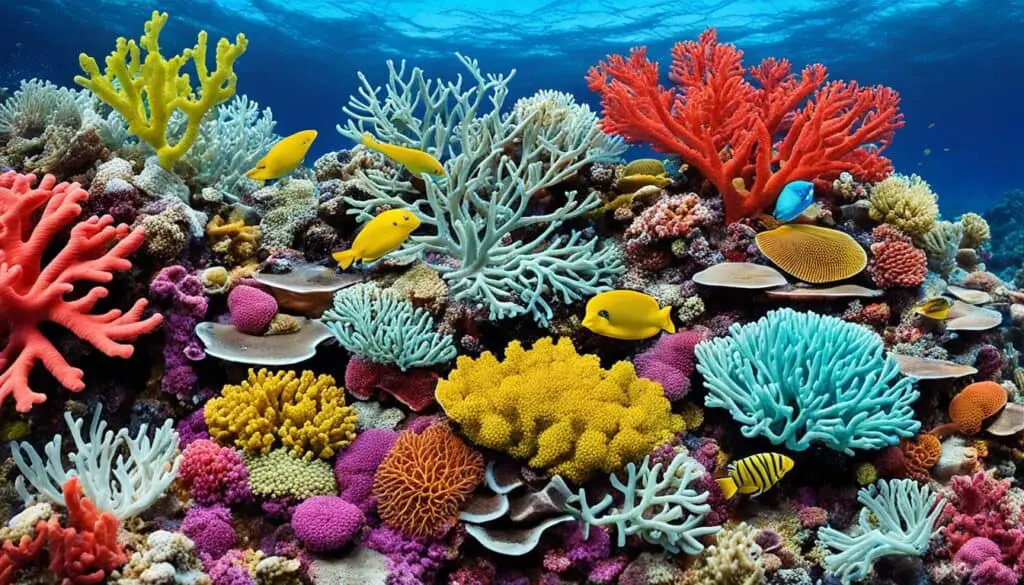
Coral Environmental Responses to Climate Change
The impact of rising ocean temperatures on corals is a big worry. When water gets too hot, corals get stressed and may bleach. This happens when they lose their symbiotic algae, which they need to survive.
This loss of color shows they’re in trouble. It means they can’t make their own food anymore. This makes them more likely to die.
Impact of Rising Ocean Temperatures on Corals
Higher sea temperatures are a big problem for coral ecosystems. Some corals can handle the heat, but most can’t. This puts the whole coral community at risk.
The climate change impact might be too fast for corals to adapt. This is bad news for marine life that depends on coral reefs. These reefs are key to the health of our oceans.
Coral Lifespans and Adaptive Potential
Understanding how long corals live is important for their future. Their ability to adapt to climate change affects their lifespan. If they can’t adapt, their lives could be shorter, which is bad news for the ocean.
We need to act fast to help corals adapt. Protecting coral reefs is crucial for the health of our oceans. Supporting their efforts to adapt is key to saving these amazing creatures.
FAQ
How do corals adapt to their environment?
Corals adapt by using genetic differences to survive in various conditions. This genetic variety helps natural selection. It picks traits that help corals deal with environmental changes.
What role does genetic variation play in coral adaptation?
Genetic variation is key for coral adaptation. It brings diversity to coral populations. This diversity helps natural selection. It lets corals with good traits, like high heat tolerance, survive and reproduce in new environments.
How do temperature thresholds affect coral adaptation?
Corals have different heat limits for bleaching. Those in warmer waters can handle higher temperatures better. This shows they can adjust to warmer conditions.
What is algal symbiosis, and why is it important for corals?
Algal symbiosis means corals live with heat-resistant algae. This partnership is crucial for corals. It gives them food and helps them deal with rising ocean temperatures.
What survival mechanisms do corals exhibit against environmental stressors?
Corals use many ways to survive, like being more heat-tolerant and choosing who reproduces. These strategies help them deal with ocean acidification and other challenges.
How do rising ocean temperatures impact corals?
Rising ocean temperatures hurt coral reefs by causing bleaching. As temperatures go up, corals find it harder to adapt. This puts their survival at risk.
What is the relationship between climate change and coral lifespans?
Climate change may affect how long corals live. The fast pace of environmental changes can be too much for corals to adapt to. This could threaten their survival over time.

